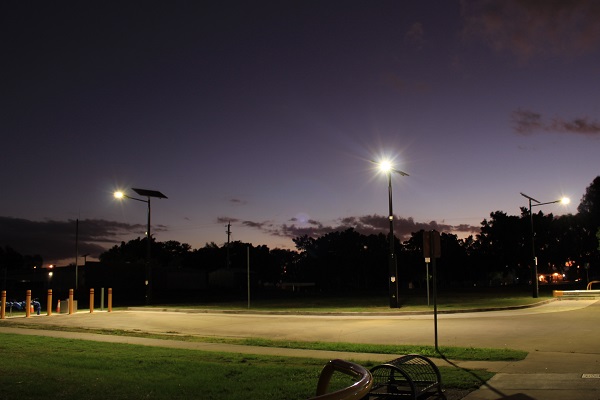Solar lighting in mission-critical applications
Lighting professionals mask ask themselves if solar lighting is suitable for mission-critical lighting applications. John Warren, Orca Solar Lighting, takes a deeper look.
Mission-critical lighting applications include pedestrian crossings, street lighting, remote highway flag lighting and high-usage or dangerous car parks to name a few. Lighting in these settings is essential and potential downtime should be eliminated at all costs.
ADVERTISEMENT
Solar lighting can be very suitable for these applications, delivering reliable constant all-night light, all year around, regardless of weather conditions when done right.
All this is dependent on three important factors: the solar engine sizing and design, the quality of the components and the installation. Over the past fifteen years, solar lighting has become increasingly reliable and dependable, due to improved and robust frameworks developed by designers and manufacturers that are committed to rock-solid reliability.
In this article, I’ll illustrate how a lighting project planner can ensure all three of those factors are met, increasing the chances of providing reliable and robust solar lighting.
The first element in the framework is providing relevant and reliable solar radiation data. This data needs to be broken into monthly figures, with a detailed calculation for each month. The information required includes maximum consecutive dark-out days, solar radiation on various angled solar panels, night-time lengths and peak sunlight hours to name a few.
This data can then be input into a specialised solar engine sizing calculator tool. This tool runs through a range of different panel and battery scenarios to establish the optimum panel-to-battery ratio, providing reliable year-round lighting.
Another benefit of using this tool is that it buffers and re-rates all the possible variables. For example, in cold temperatures, battery performance decreases and solar panel performance increases.
Allowances for voltage drop, as solar lighting systems are typically extra low voltage (ELV), 12V or 24VDC, a healthy amount of voltage drop per meter needs to be factored in, especially if the current is running the entire height of a 6m to 10m high pole. There also must be allowances for a dirty solar panel and the degradation of components over time. The solar lighting system needs to be as reliable at years five and ten, as it is when brand new.
Industrial strength components are proven to work night after night in the most gruelling climates. Components that are proven in the field and typically made of very durable substrates, with the use of higher quality materials, such as aircraft window grade polycarbonate, 316 stainless steel fasteners and low-copper content aluminium in the die casting.
Expect to pay more for industrial-grade gear and it should save a lot of money and disruption over the total life of the solar light.
Another factor is experienced planning and installation and this starts with nuanced shading advice. Remember, power in equals power out, therefore solar panels require direct sunlight to run at peak performance and the energy yield plummets when this is not the case.
Anticipating shade from nearby trees, buildings and mountains at all times of the year is essential, and de-rates to the running of the light, or slave and master pole arrangements need to be planned for.
Explaining slave pole arrangements is outside the scope of this article, however, can be a great solution if some of the light poles in your project will be affected by shading at some time throughout the year. The installation needs to allow for optimum solar panel angle and orientation, the most effective is the solar panel facing the equator at a predetermined angle from the horizontal. This angle is determined by the latitude of the solar lighting installation.
For example, in Sydney, the optimum arrangement is 45° from the horizontal, facing north towards the equator. In the Northern Hemisphere, solar panels are required to face south towards the equator.
And finally, setting a budget expectation is essential. In the decision-making process, ensure a robust method for comparing total lifecycle cost to the upfront cost and all decision-makers on the project have bought into the importance of this. The bitterness of a failure strongly outweighs the sweetness of a low price.
As part of the planning process for a successful solar lighting installation, I recommend you check out previous editions of Electrical Connection, including the article in the Spring 2022 edition, looking at successful steps to plan an outdoor solar lighting installation.
Solar Lighting requires some upfront homework research and planning, however when conducted thoroughly, this effort should reward the planner with a very successful outcome.
-
ADVERTISEMENT
-
ADVERTISEMENT


